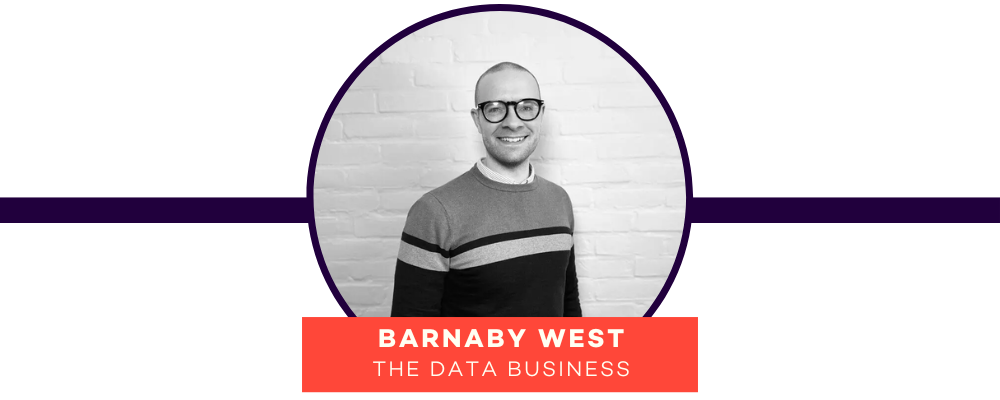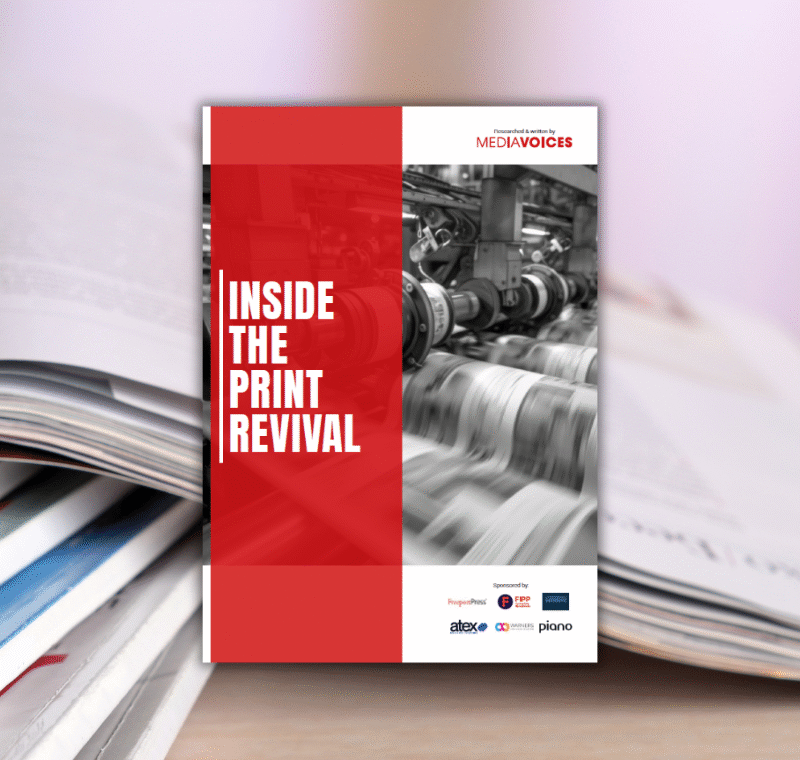The Data Business on the importance of progressive profiling and smart forms when engaging subscribers
To help publishers make the most of their mailing and subs lists, FIPP has teamed up with The Data Business – the B2B-data services agency that helps publishers build and manage highly effective databases using a team of experts and customised technology – for a series of invaluable data tips.
This week, Commercial Director at The Data Business, Barnaby West, explains why publishers should use progressive profiling and smart forms to gather additional information about subscribers over time, rather than overwhelming them with lengthy forms.
It’s a strategy that builds comprehensive profiles while keeping the user experience smooth. Better, gradually collected data can improve personalisation and segmentation, leading to more relevant content and offers.

Could you start by explaining what progressive profiling is and why it’s so important when engaging with subscribers?
With subscriber registration forms, you will want to harvest as much data from somebody as possible, because that data is incredibly valuable. There’s a risk to that because, as we all know from our normal lives, the longer you have to do a registration form, the more chances are that you mentally check out and just try and put any old rubbish in there to get through the process. Some people are disingenuous when it comes to the answers. So, what you want to try and do is progressive profiling. You almost want to create different opportunities to interact with your reading audience as time goes on. While it’s very tempting to get all of that information at once, what is often very effective if you are a publication that also carries out conferences, events, webinar opportunities or other kind of marketing opportunities, is to put in a few questions here and there that builds up your relationship over time. That also gives a secondary benefit because you’re learning about your readership over a period of time where things change. You can start to see different patterns of behaviour and grow that kind of relationship over time. So that’s the idea of progressive profiling.
How can publishers use smart forms to gather information?
Smart forms are the future of accumulating this information. Up until now, the only option has been just to put pages of information in front of somebody and get them to fill it out. But what we’re doing – and what we’re finding with publications in particular – is that there’s a lot of data around that doesn’t have to be specifically answered by the client. For example, instead of having the whole page to find out about the subscriber’s company – like their size, where they’re located, how many employees there are or the turnover – you can learn a lot of that if you’re using AI technology. It is something we have built over the last four or five years just from their LinkedIn profile or their website domain. So instead of getting them to do all that information, you’re just asking them to enter a very small bit of info such as their website. And then you can learn from that.
You’ve got the AI technology to pull all of that information once it knows which company it’s looking at. So that’s something that we’re working across our client base with to allow them to do much shorter but more informative registration forms. That cuts out the human effort.
How is what The Data Business offers different to registration form companies?
Registration form companies are very good at producing the forms and getting people to ask the right questions and facilitate that. But what they often fall off on is actually working through that data – fixing a silly job title someone has put in because they’re bored. You want to actually get the right job title or check if someone has inflated their position because it might get them a free ticket to something. That information has to be verified and checked, and registration form companies don’t do that. That’s where we come in.
Why is having more comprehensive profiles crucial to publishers?
It helps them at every single stage of their business onboarding. If you’re a publication you’re looking to produce good databases for your advertisers and good databases for your sponsors – essentially the two groups are who are going to be giving you the most money. And the advertisers are not just interested in selling two inches of advertising space, they also want access to timely data. They want to know when their subscribers are going to be in the market for buying a new product or a new service, or when are they renewing something, or which type of subscriber reads a certain section. So, hypothetically, a hospitality publication could be read by pub owners, restaurant owners, hotel owners, hostels, B&B’s and all these types of audiences will want different things. A B&B owner will want something different than a pub owner from that subscription. You’ve got to understand that audience and really segment the data. It’s not just about having the comprehensive view of each subscriber. To use that data on mass – and with the volume that that’s got the punch that’s powerful enough to get through to your advertisers – you’ve got to segment that data as well.
Comprehensive data is fantastic and it’s a great place to start, but you’ve got to then group that data into groups of similar decision-makers that are going to be interested in the similar types of offerings that your subscription-based publication delivers, but also the types of services and products that your advertisers are wanting to sell. Otherwise, you’re going to end up selling new beer keg technology to B&B owners and that’s kind of pointless. And it not just organisation types, but it’s within that organisation as well. If you are a publication and you’ve got managers, department leaders, owners all reading that publication, they’re going to be reading it for different things. Once you start to group all of those people in their different segments, you’re able to speak to a lot of them with one voice and you can then do different marketing campaigns targeting the different job title levels and different seniority levels.

FIPP Insider New York
5 December 2025
Join us at the iconic Hearst Tower for a morning dedicated to Innovation in Magazine Publishing.
Find out more and secure your place
Why is it so important to keep the user experience smooth throughout while doing progressive profiling?
You have to make sure your users are being spoken to correctly. We do a service called ‘data building’ and so many companies are given my contact details from some third party source. Because we have the word ‘building’ in our services I get offered construction and outdoor ground maintenance equipment, because that’s what they think I do. Nobody’s bothered to check. The quickest thing that turns you off as a potential prospect is not only receiving emails that are irrelevant for me, but it shows me that you haven’t done any work at all to even consider that I might not be relevant. So, the same thing can happen to your subscribers if you’re not looking after that data. If somebody moves in hospitality from the bar to the head of restaurant or they move into the kitchen or housekeeping, but you’re still talking to them as though they’re a barman or barmaid, you start to look a bit silly. And they’re certainly not going to buy from any publication that is speaking to them as though they’re somebody who they’re not. And what’s worse is you’re going to be offering your advertisers, beer keg suppliers for instance, to somebody who’s now in housekeeping in a hotel.
So, you can see the many, many ways that data alone is the easiest way to solve this. Gone are the days of phoning up every organisation you have and making sure that everybody still does their jobs. All of that information is out there. There’s no excuse for it. A five-minute Google of nearly everybody who’s in the professional and B2B services will find you their job title, their company and what they’re interested in. A longer search will be able to tell you much more. So that’s what we mean when we talk about a better user experience. It not only benefits subscribers, but also organisations that are using that data because they look fantastic.
Could you give us an example of how The Data Business has helped a publisher embrace progressive profiling and smart forms?
We’ve worked on a very large food and drink retail event that’s also a publication. The publication is their main area of industry, but they also run one large event in London for food and drink retailers – everything from farm shops to supermarkets. What they were finding was their exhibitors, who paid them a lot of money to turn up at these shows, were starting to give them the feedback saying: “We’re seeing a lot of the same people, a lot of people who shouldn’t really be here. When I see and scan their ID, I see a lot of them are saying that they are head of procurement or head of buying. But actually, when I talk to them in person, they tell me they do not have purchasing authority.”
It was quite clear that a significant percentage of that audience had turned up just for a day out, essentially not to really engage with exhibitors. You’ve got to minimise that as much as possible. So, we took all of their registration data and our AI tech, backed up our team, went through each one of those records and did two things – firstly verify that the person had the job title they said they did or had the responsibilities they said they did. And the second one was verifying if they worked at that company or not. We were able to send data back to our client to review and say – look, here are all the people who didn’t make the cut and you can then decide what you want to do with them. Even though the numbers were down at the event, the exhibitor feedback was much better than it was before because they had only let in the creme de la creme of who they wanted.
What did you do to after event took place?
We took the post-event registration data and we did categorisation – we said here are all the job titles, here are all the companies that these people are from, let’s divide them into seniority and job function and then let’s divide the companies into sectors and types. What that allowed you to do is very quickly understand – once you pair that with who has been talking to exhibitors with their scan ID – the parameters of the people who were actually there to talk to the exhibitors.
So, for next time, you know that, hypothetically, 35% of those people who have the highest interactions with our exhibitors were owners, founders, directors of small food and drink retailers or they were head of procurements at the largest supermarkets. So, then when you come to the year 2026 or 2027 and you’re looking to build that show and you want to attract that specific audience, you’re not just guessing who interacts with your audience. You’ve got that evidence to engage with the people you want at that show. But you’ve also got the opportunity to talk to your exhibitors and your sponsors and say, look we know that out of the top five supermarkets, we attracted 20% of their procurement and buying representatives and they had good relationships with similar companies to you and here’s the data. It’s not just us making it up, the data is there to show that. So, you’re also able to attract much bigger exhibitors and bigger sponsors, because they know that the return of investment is much more secure than it is if you’re just trying to persuade them with glitzy videos and photos.










